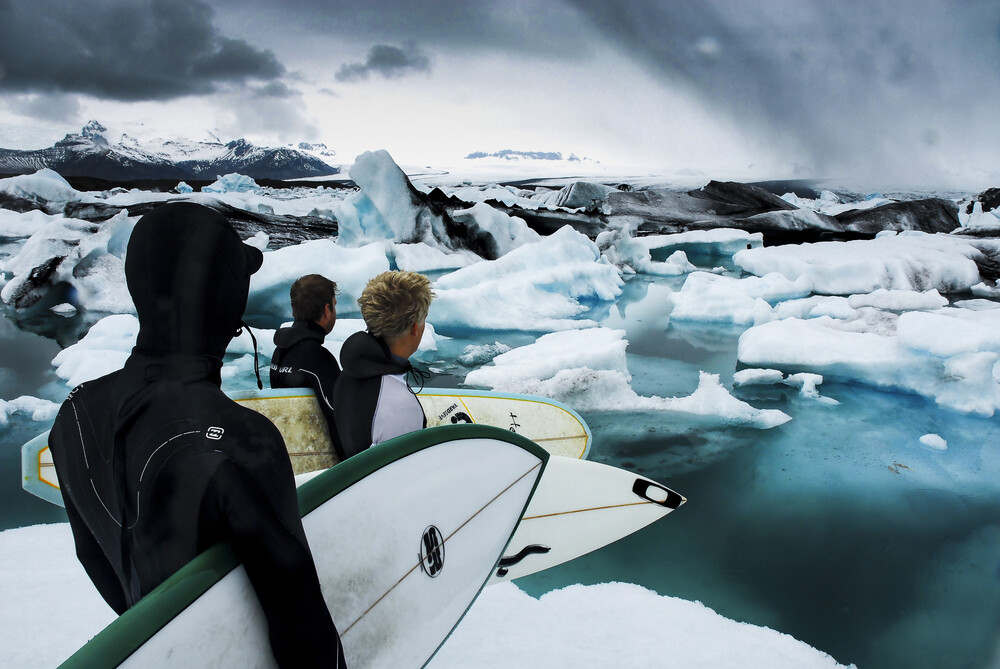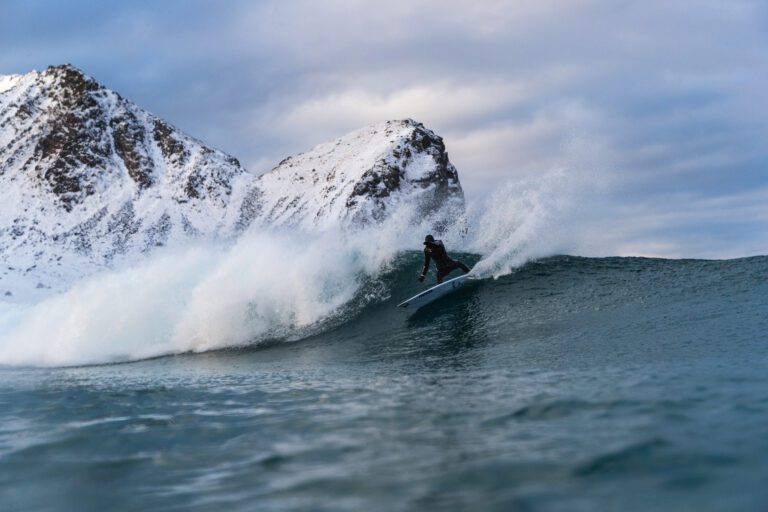Surfing, traditionally associated with sunny beaches and tropical paradises, has a growing subculture that thrives in the unlikeliest of places—polar regions. Cold water surfing, an emerging trend among adventurous wave riders, has gained traction in recent years. This extreme form of surfing combines the thrill of riding waves with the unique challenges and frigid waters of the Arctic and Antarctic. In this article, we will delve into the world of cold water surfing, exploring the allure, the challenges, and the environmental implications of this niche sport.
The Allure of Cold Water Surfing
- Unspoiled Beauty: Cold water surfing destinations offer unspoiled natural beauty. Think towering icebergs, snowy coastlines, and stunning polar landscapes as your backdrop while riding the waves. Surfers often describe it as an otherworldly experience.
- Challenging Waves: Cold water surfers are drawn to the unpredictable and challenging waves of polar regions. The remoteness and limited accessibility of these spots ensure uncrowded lineups, where surfers can test their skills against powerful and cold waters.
- Adventure and Exploration: Cold water surfing is the ultimate adventure. It takes surfers to remote locations where they can explore untouched wilderness and connect with nature in a profound way.
The Challenges of Cold Water Surfing
- Extreme Cold: Surfing in polar regions means dealing with frigid water temperatures. Surfers must wear thick wetsuits or drysuits, hoods, gloves, and boots to stay warm. Hypothermia is a real risk, even with proper gear.
- Harsh Weather Conditions: Arctic and Antarctic regions are known for their harsh and unpredictable weather. Surfers must contend with strong winds, snow, sleet, and limited daylight during the winter months.
- Limited Accessibility: Many cold water surfing spots are remote and difficult to reach. Getting to these locations often requires long journeys by plane, boat, and sometimes snowmobile.
- Environmental Impact: Surfing in pristine polar environments raises concerns about the potential impact on fragile ecosystems. Surfers must take extra care to minimise their environmental footprint, practicing Leave No Trace principles.
Environmental Implications and Conservation Efforts
- Responsible Surfing: Cold water surfers are increasingly aware of their impact on fragile ecosystems and strive to minimise it. This includes not disturbing wildlife, avoiding trampling on vegetation, and disposing of waste responsibly.
- Scientific Research: Some surfers in polar regions actively contribute to scientific research. Their unique perspective and access to remote areas can provide valuable data on changing polar environments and wildlife behaviour.
- Conservation Partnerships: Surfing communities often collaborate with environmental organisations to support conservation efforts in polar regions. These partnerships can include beach cleanups, awareness campaigns, and fundraising initiatives.
Cold Water Surfing Destinations

- Lofoten Islands, Norway: The Lofoten Islands offer world-class cold water surfing with breathtaking Arctic scenery. Surfers can ride waves amidst snow-capped peaks and picturesque fishing villages.
- Tofino, Canada: Located on Vancouver Island, Tofino is a popular cold water surfing destination known for its consistent waves and stunning Pacific Northwest landscapes.
- Reykjavik, Iceland: Iceland’s rugged coastline provides numerous cold water surfing opportunities. Surfers can explore black sand beaches and even catch a glimpse of the Northern Lights during winter sessions.
- Dunedin, New Zealand: While not in the polar regions, Dunedin offers cold water surfers the chance to ride waves in a unique Southern Hemisphere setting with crisp waters and dramatic cliffs.
Conclusion
Cold water surfing is not for the faint of heart, but for those who embrace the challenges, it offers an unparalleled connection to the natural world and the thrill of conquering extreme conditions. While there are legitimate concerns about its environmental impact, responsible surfers are working to mitigate those effects and support conservation efforts.
As more adventurers seek the unique experience of riding waves in polar regions, the cold water surfing community has the opportunity to be ambassadors for the fragile ecosystems they cherish. With a commitment to preserving the pristine beauty of these remote destinations, cold water surfers can continue to explore and enjoy the icy waves of the Arctic and Antarctic while ensuring their protection for future generations.
UP NEXT
Riding the Waves: Oceanic Nomad Guide To Bali
California Dreaming: The Thrills of Surfing in the Golden State



